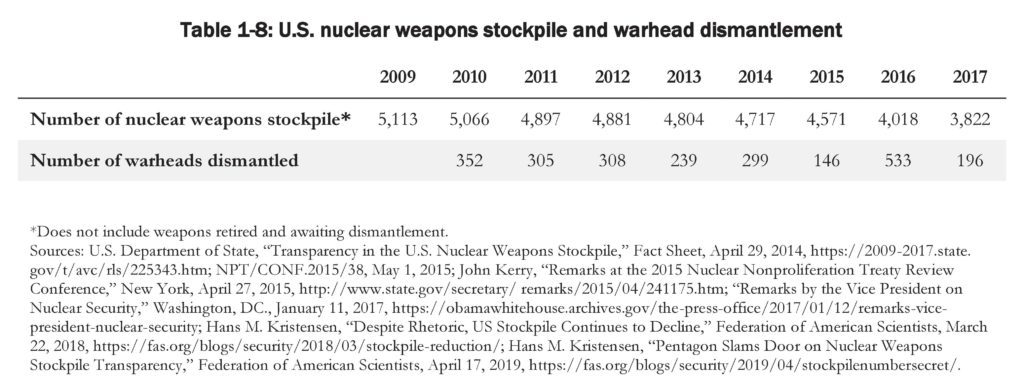(11) Irreversibility
A) Implementing or planning dismantlement of nuclear warheads and their delivery vehicles
As with their previous nuclear arms control agreements, the New START obliges Russia and the United States to dismantle or convert strategic (nuclear) delivery vehicles beyond the limits set in the treaty, and do so in a verifiable way. The New START does not stipulate that retired nuclear warheads be dismantled, but the two states have partially dismantled retired nuclear warheads as unilateral measures. As mentioned above, the U.S. Department of Defense decided not to disclose information regarding the number of dismantled nuclear weapons.224 France and the United Kingdom also continue to dismantle their retired nuclear warheads and delivery vehicles.
B) Decommissioning/conversion of nuclear weapons-related facilities
No remarkable activity or progress was reported in 2020 in terms of the decommissioning or conversion of nuclear weapons-related facilities.
In 1996, France became the only country to decide to completely and irreversibly dismantle its nuclear test sites. They were fully decommissioned in 1998.225 As mentioned above, North Korea collapsed the entrance tunnels to its nuclear test site, but whether this “shutdown” is complete and irreversible has yet to be confirmed.
C) Measures for fissile material declared excess for military purposes, such as disposition or conversion to peaceful purposes
In October 2016, Russian President Putin issued a Presidential Decree on suspending implementation of the Russian-U.S. Plutonium Management and Disposition Agreement (PMDA), which entered into force in July 2011.226 The situation has not been resolved. In its annual report, “Adherence to and Compliance with Arms Control, Nonproliferation, and Disarmament Agreements and Commitments” in 2020, the United States stated, “There is no indication that Russia has violated any of its obligations under the PMDA. Russia’s October 2016 notification of its purported suspension of the PMDA raised concerns regarding Russia’s future compliance with its PMDA obligations.”227
In the meantime, as mentioned in the Hiroshima Report 2020, the U.S. Trump administration, like its predecessor, has sought to end construction of the Mixed Oxide Fuel Fabrication Facility (MFFF) at the Savannah River Site in South Carolina, and to pursue the dilution and disposal approach, due to increasing cost and scheduling delays. Congress has not approved this approach, and has allocated a budget for the construction of the MFFF.228 However, the NNSA formally terminated its construction in October 2018.229 The NNSA is proposing to repurpose the MFFF to produce plutonium pits.

224 It is estimated that the United States dismantles approximately 300-350 nuclear warheads per year. Hans Kristensen, “Trump Administration Again Refuses to Disclose Nuclear Weapons Stockpile Size,” Federation of American Scientists, December 3, 2020, https://fas.org/blogs/security/2020/12/nuclear-stockpile-denial-2020/.
225 NPT/CONF.2015/10, March 12, 2015.
226 It stipulates, inter alia, that 34 tons each of surplus U.S. and Russian plutonium extracted from dismantled nuclear warheads shall be converted into mixed oxide (MOX) fuel for use in civilian nuclear reactors.
227 U.S. Department of State, “Adherence to and Compliance with Arms Control, Nonproliferation, and Disarmament Agreements and Commitments,” June 2020, p. 27.
228 Kingston Reif, “MOX Facility to Switch to Plutonium Pits,” Arms Control Today, Vol. 48, No. 5 (June 2018), p. 29.
229 Timothy Gardner, “Trump Administration Kills Contract for Plutonium-to-Fuel Plant,” Reuters, October 13, 2018, https://www.reuters.com/article/us-usa-plutonium-mox/trump-administration-kills-contract-for-plutonium-to-fuel-plant-idUSKCN1MM2N0.






